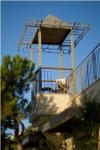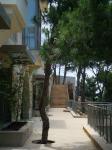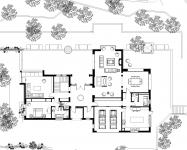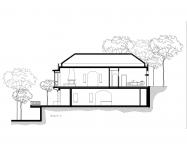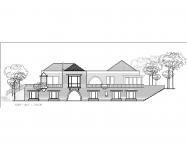DABBAGH HOUSE
As a practice , our main concern is to develop an architecture that is environmentally responsible and culturally relevant. The context is always our inspiration. By context we mean not just the site, climate and building materials, but the users and their culture. This, we believe, will lead to sustainable developments which are at the heart of our concerns with energy efficiency, the corner stone of our approach
The Dabbagh house was very much a response to its site. An old pine forest, the site is located on a hillside overlooking Beirut. The house was carefully sited with minimum disturbance to the trees while providing every room a stunning view of Beirut. Embedded in the land, the size of the house was absorbed thus preserving the scale of the forest . Furthermore the landscape architects ecological approach left the half the site as simply forest while incorporating the family needs closer to the house
Typical of Lebanese family houses today , the number of occupants varies greatly between seasons. In winter the house is used during weekends by the parents while in summer, the three children return with their families to visit together in the family house. Therefore the priority in the design was to have flexibility so that the house is cozy for one couple to use while still able to accommodate four families . The ground floor is designed to be a self contained flat while the lower ground floor accommodates the rest of the family. Also the lower ground floor can be used as an independent unit with its own entrance.
The orientation of the house allowed for maximum ventilation while the layout of the house interconnects the public spaces which extend to terraces which in turn give directly to the gardens. This layout provides the family a large space for entertaining .
The large arches at the entrances are used to create welcoming porches in the manner of traditional Lebanese architecture. Similarly the bay window and kiosk are features of the local architecture used to celebrate stunning views while the pool on the terrace, with its gurgling water , recalls the courtyards of traditional houses.
With the environment very much a priority, local stone was used for the cladding. Rain water is collected for irrigation and solar panels for heating the water.
The house is an attempt at creating contemporary architecture that celebrates its rich context both physical and cultural
2010
2013
Built area: 800 sq.m
Client: Dr. and Mrs. Salah Dabbagh
Collaborators:
Landscape architect: Dr. Jala Makhzoum
Structural Engineer: Dr. Adel Qadi
Mechanical Engineer: W. Hobeiyka
Electrical Engineer : Naji Jeha
Contractor: Michel Abi Mansour

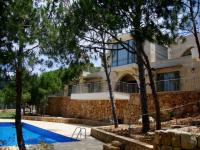
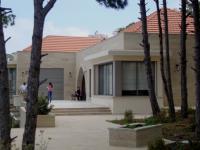
.jpg.jpg)
